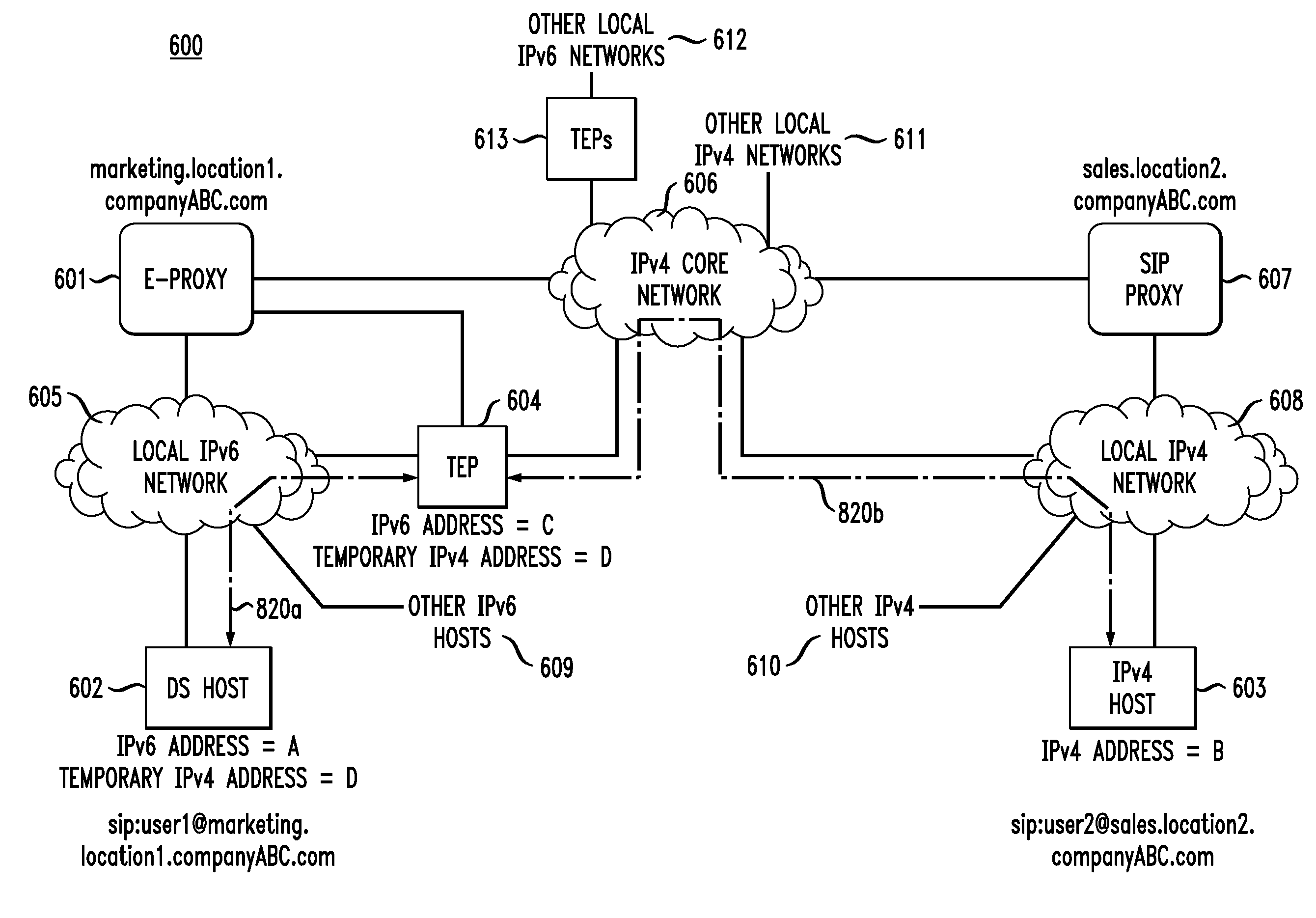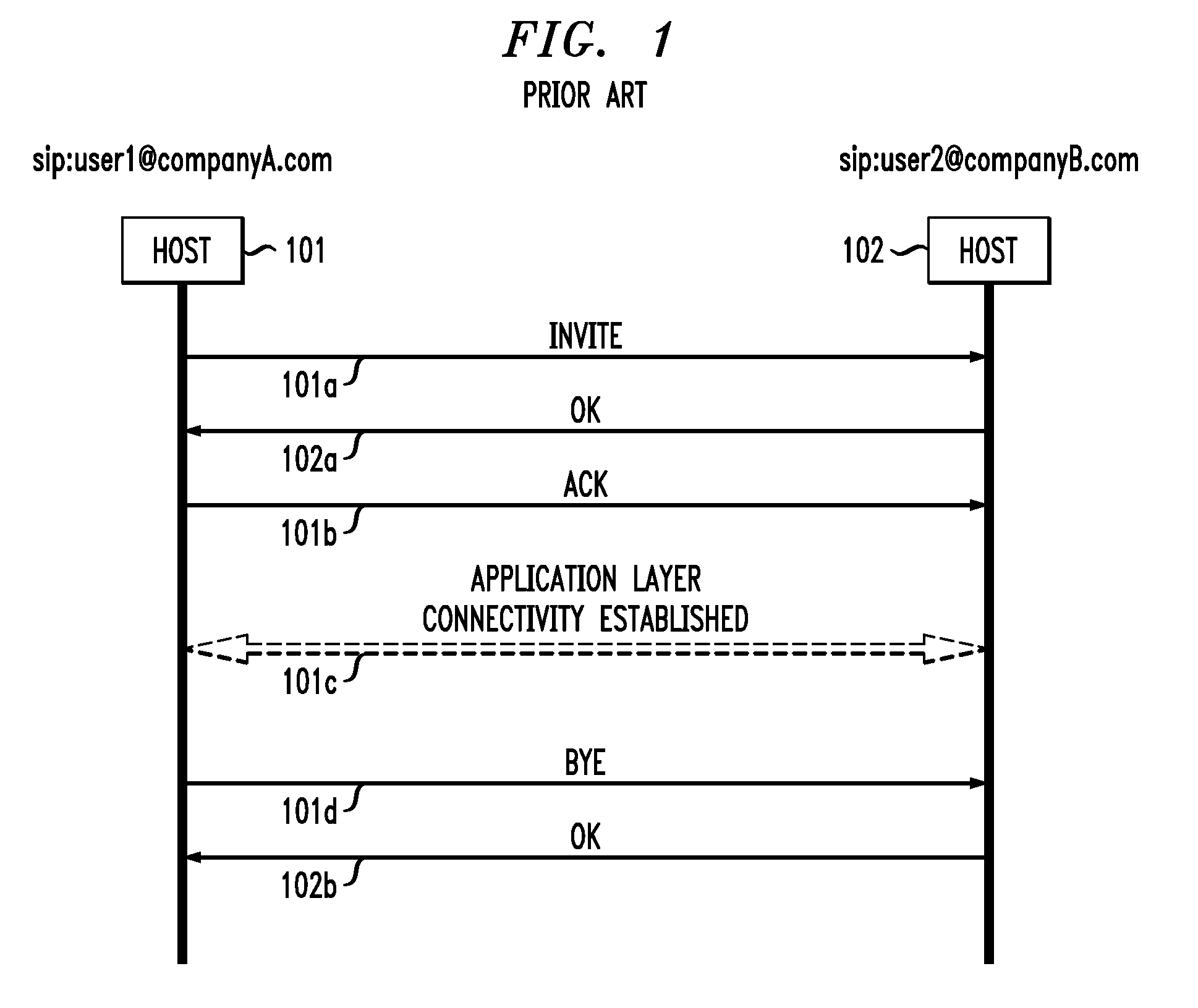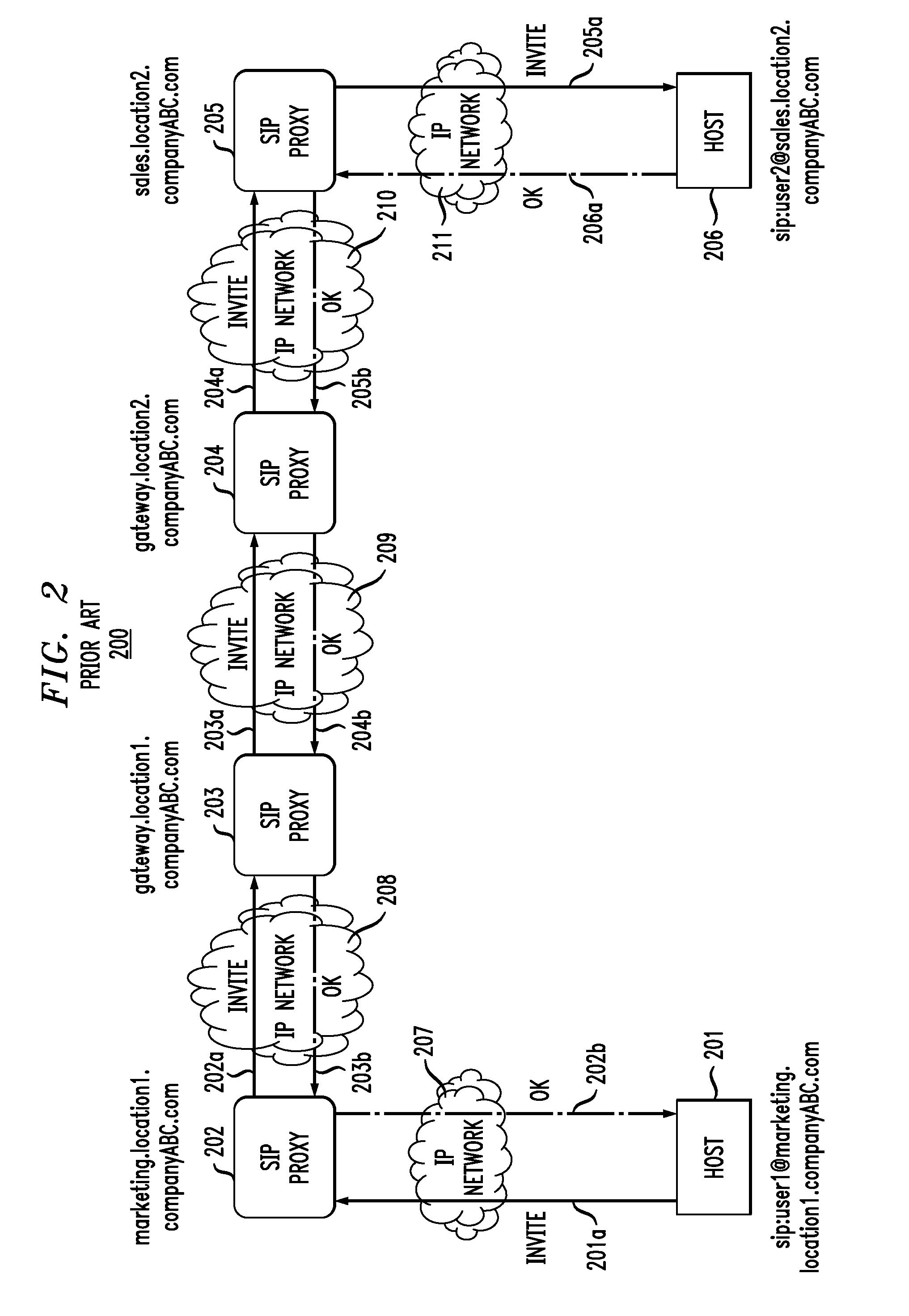Peer-to-peer communication between different types of internet hosts
a technology of peer-to-peer communication and internet hosts, applied in the field of peer-to-peer communication between different types of internet hosts, can solve the problems of increasing complexity and cost, degrading performance, and other techniques having similar limitations
- Summary
- Abstract
- Description
- Claims
- Application Information
AI Technical Summary
Problems solved by technology
Method used
Image
Examples
Embodiment Construction
[0054]One embodiment of the invention is an Enhanced SIP proxy (e-proxy), which allows for call setups between IPv4-only hosts connected to an IPv4 network and IPv6 / IPv4 dual-stack (DS) hosts connected to an IPv6 network, where the call setup involves generating minimal transactions and, thus, minimal delay. It should be noted that, unless otherwise indicated, the term “IPv4 host” refers to an IPv4-only host, i.e., a host adapted to communicate in accordance with IPv4 but not IPv6. The e-proxy in this embodiment is adapted to interface with and control a corresponding TEP connected between the IPv4 network and the IPv6 network. The e-proxy can provide SIP proxy functionality to both IPv4 hosts and IPv6 hosts, which is useful for the migration of core networks from IPv4 to IPv6. A core network comprises a collection of high-capacity and high-speed routers and links to which local, or access, networks are attached. Access networks are localized networks that provide connectivity to en...
PUM
 Login to View More
Login to View More Abstract
Description
Claims
Application Information
 Login to View More
Login to View More - R&D
- Intellectual Property
- Life Sciences
- Materials
- Tech Scout
- Unparalleled Data Quality
- Higher Quality Content
- 60% Fewer Hallucinations
Browse by: Latest US Patents, China's latest patents, Technical Efficacy Thesaurus, Application Domain, Technology Topic, Popular Technical Reports.
© 2025 PatSnap. All rights reserved.Legal|Privacy policy|Modern Slavery Act Transparency Statement|Sitemap|About US| Contact US: help@patsnap.com



